Thank you
, , , , and many others for tuning into my live video with ! Join me for my next live video in the app.Sunday is when most families have more time in the kitchen and a larger lunch with the family when possible. For holidays like Easter and Christmas, Nonna or Mamma get up early and put on a pot of a slow cooking sauce, and during the time that the sauce is cooking, they will make fresh pasta.
There are regional specialties- not really “Italian” recipes. A ragu is Naples is nothing like the Bolognese sauce. Lasagna turns into Pasta al Forno in another region.
This week, Lolly Martyn and I decided to share a recipe we discussed in our Substack chats. Lolli, an eggless pasta shape made in Sicily.
Here is the info sheet Lolly wrote up for our demo.
Many regions in Italy use a simple flour and water pasta. In Tuscany, we make Pici, a hand-rolled spaghetti. In Umbria, they are called Strozzapreti or Umbricelli.
The same pasta dough is used for Cavatelli
Trofie- a little twisted pasta from Liguria.
There is a Maccheroni rolled around a knitting needle “al ferretto” in many areas of the south as well.
In Sicily, I have made the Busiate, a thin “string” of pasta rolled around a skewer.
Puglia is famous for their little ears- orecchiette.
Flour:
Some regions use the easy-to-find 00 flour. In Sicily and Puglia, they use a Semola or Semola Rimacinata, which is made from hard wheat flour. Semola, sometimes called Semolina in the USA, can be used in making bread or pasta. The rimacinata is a more delicate version of the flour which has been ground to a finer grind.
In Italy, semolina is the cream of wheat style used to make Gnocchi alla Romana.
A very coarse grind is used to make your own couscous.
The sauce- Today’s sauce is a spring version of the classic sauce made using dried fava beans. The famous version comes from Modica, and uses a Slow Food special bean, the Cottioa.
You can find dried fava beans, both whole or already peeled.
The winter version is a thick rib-sticking stew, like a Pasta e Fagioli. It can be enriched with sausage.
Our Spring version, is using fresh fava beans which are in season right now, but it’s simple to create with any fresh seasonal vegetable. Peas would be a simple alternative or even asparagus.
Our “pesto” comes from simply running the beans through the food processor and adding cheese, oil and if needed some of the pasta water.
Thanks for joining us!

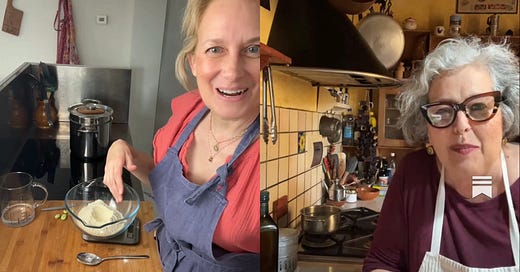




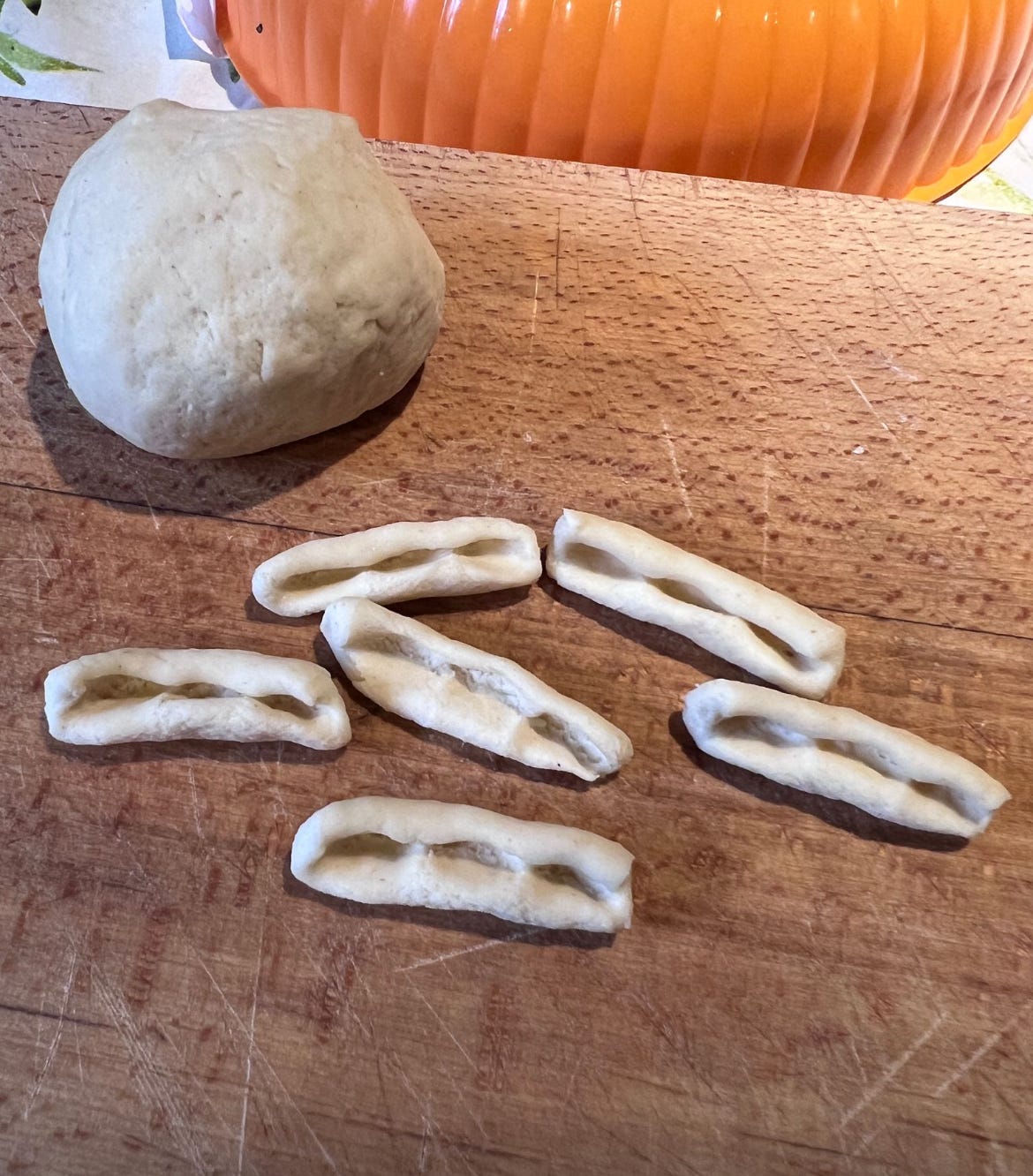

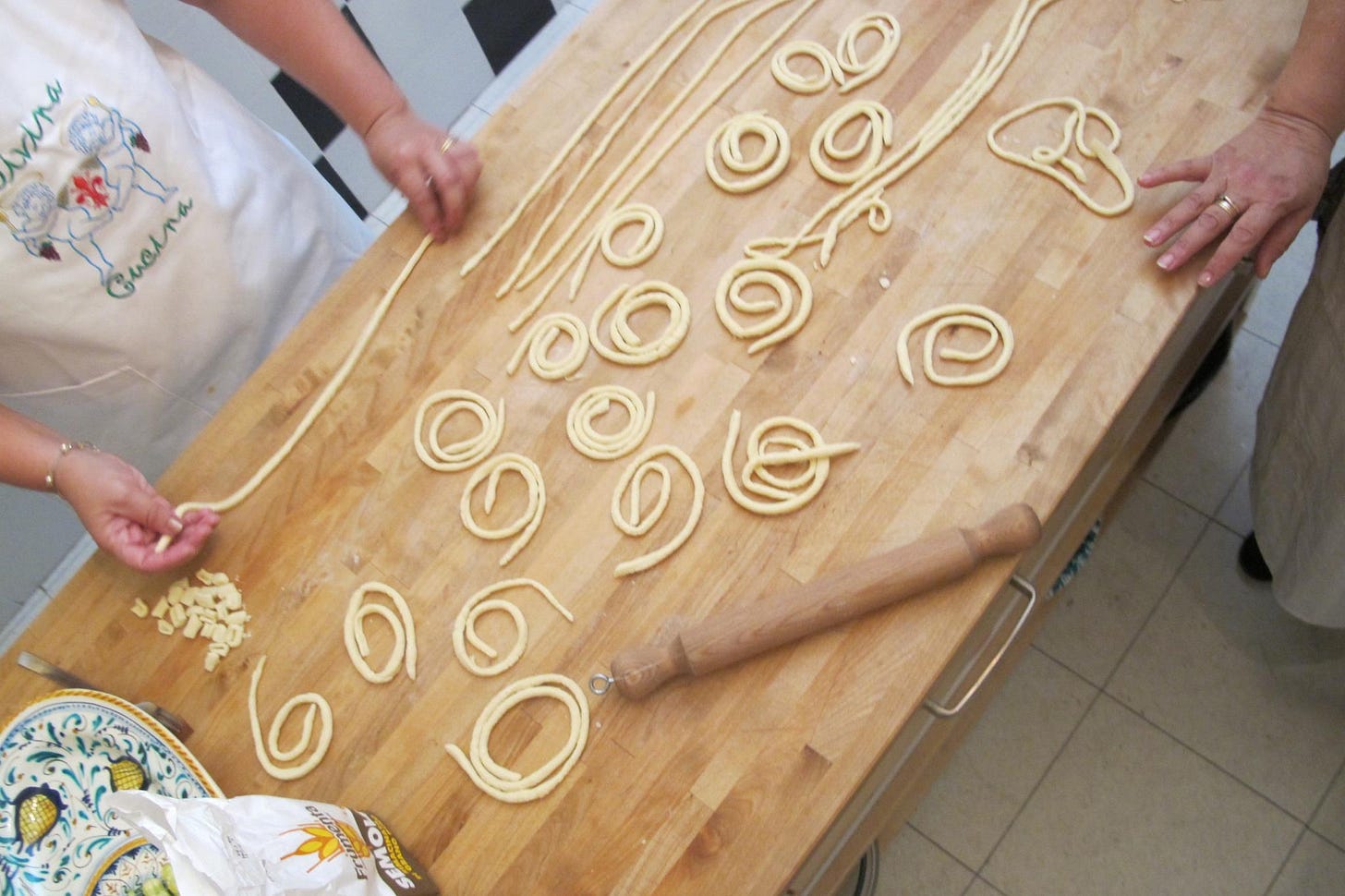
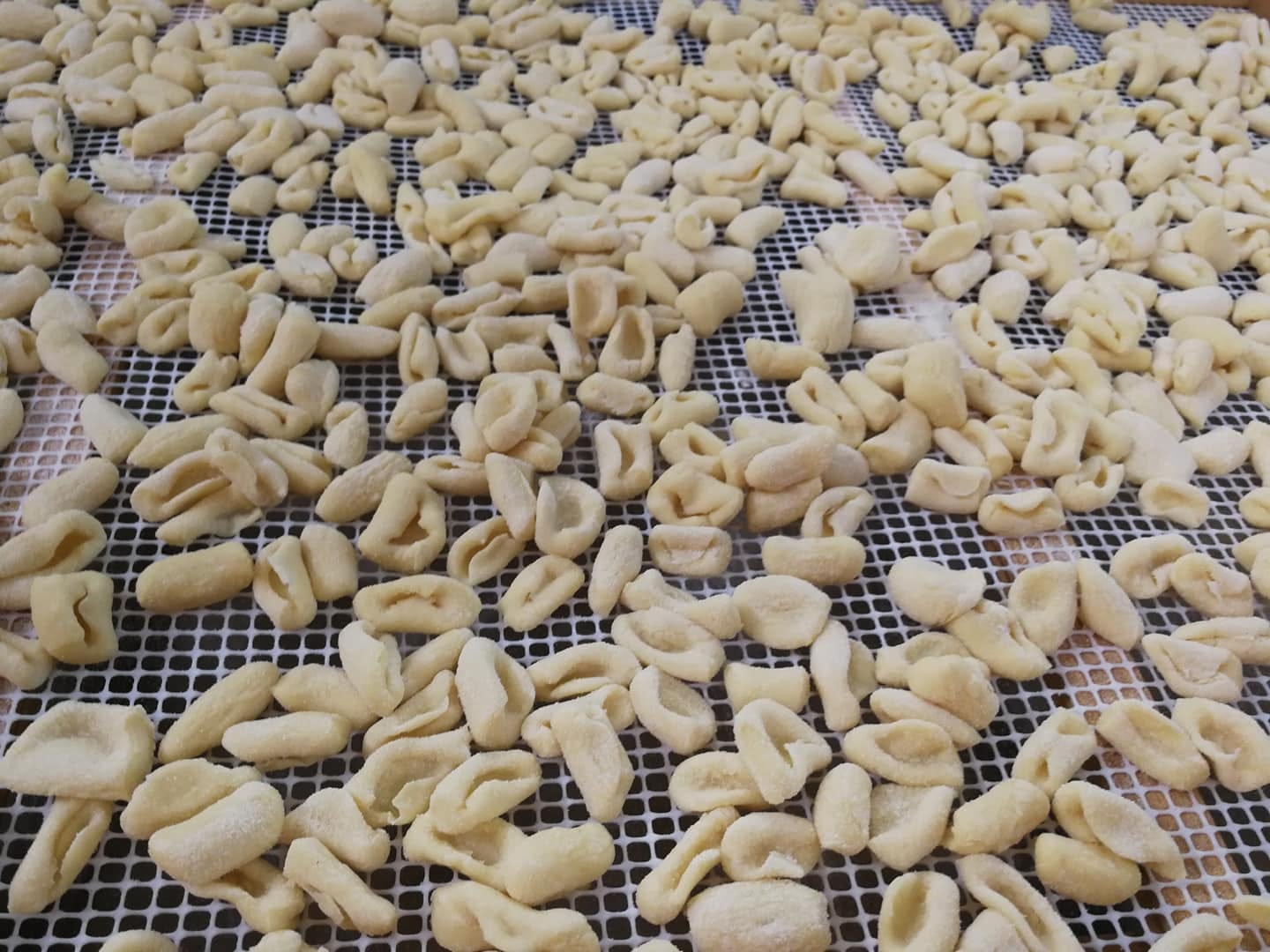




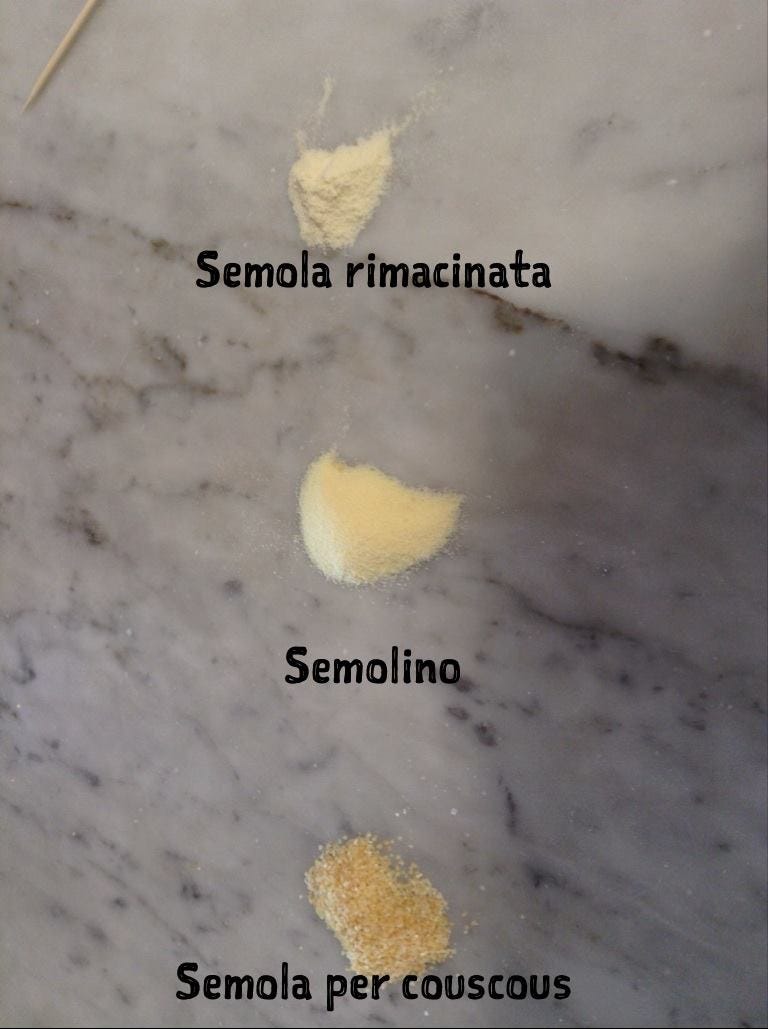





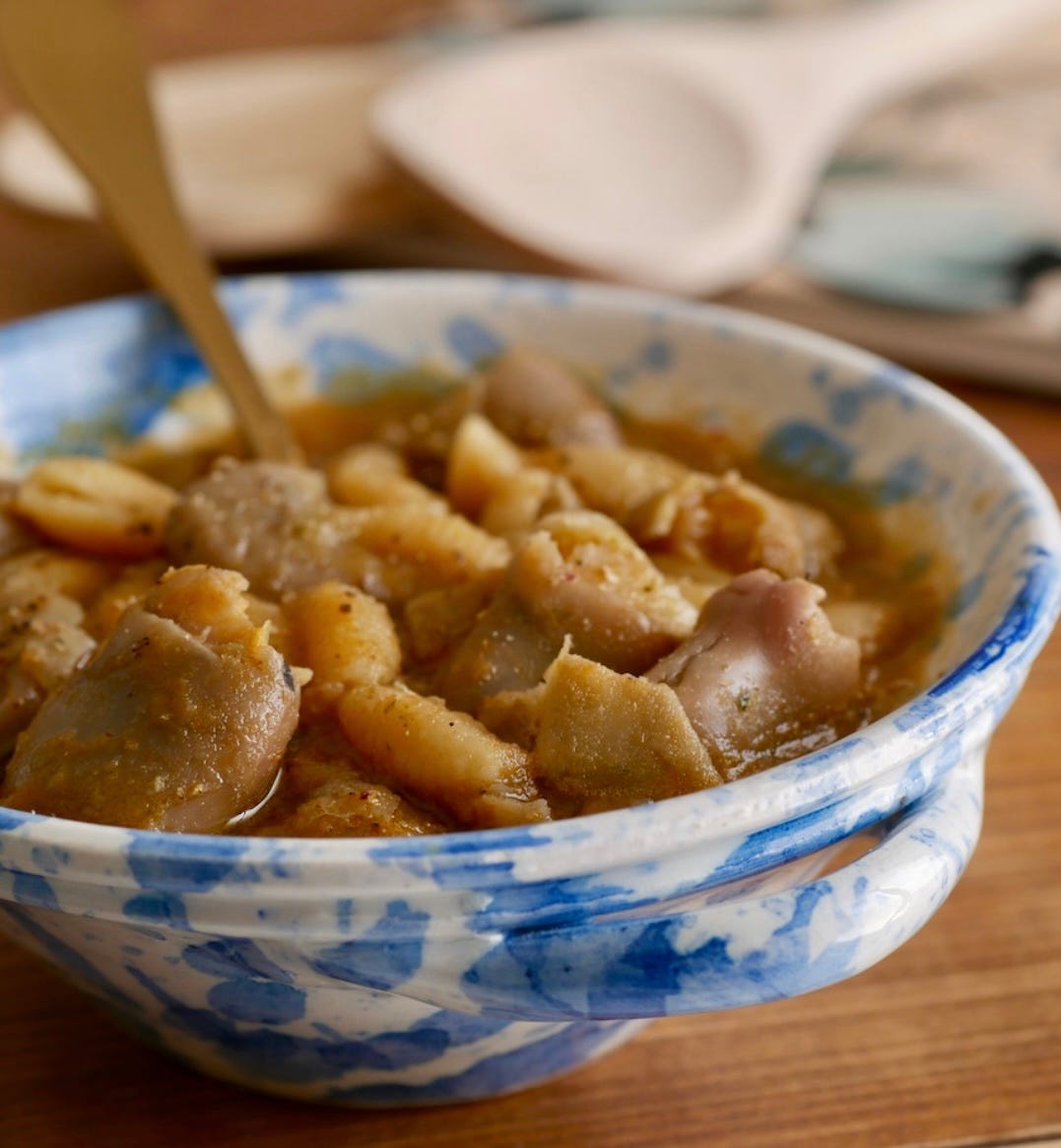
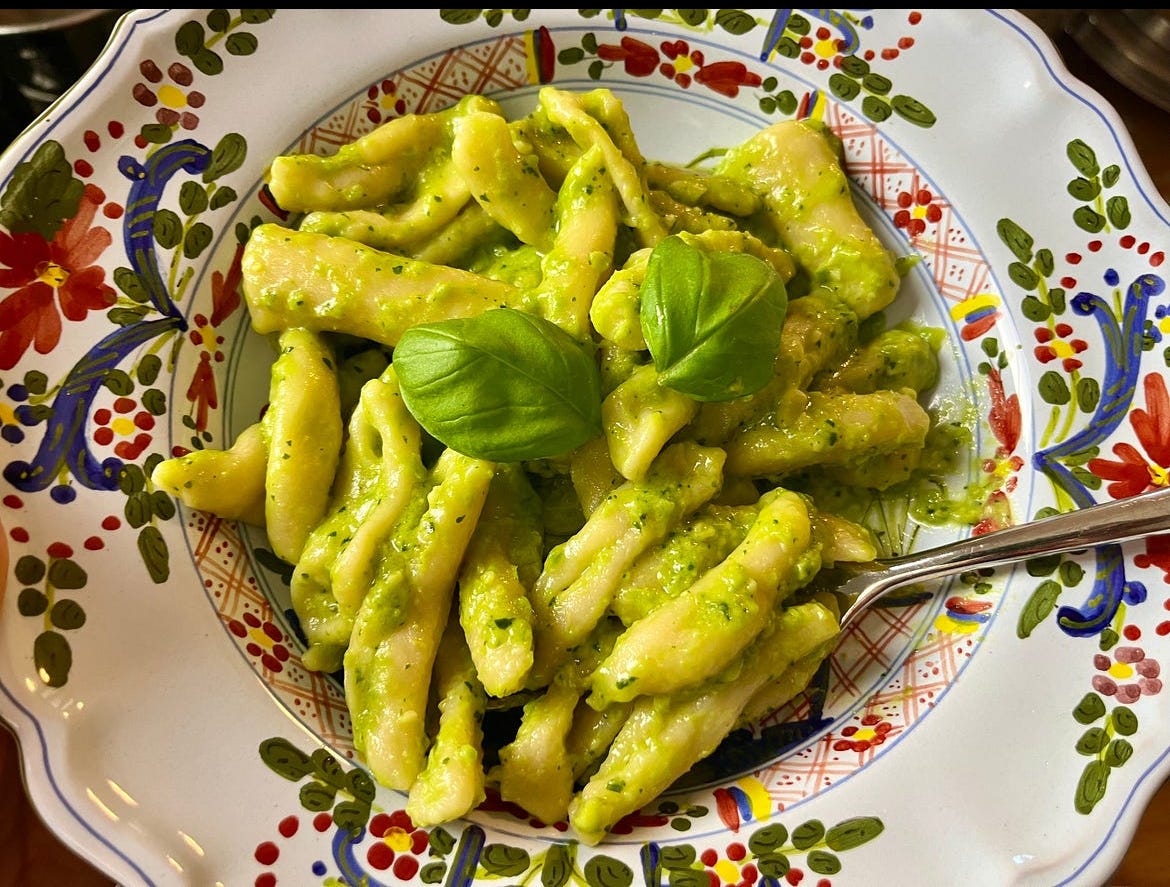
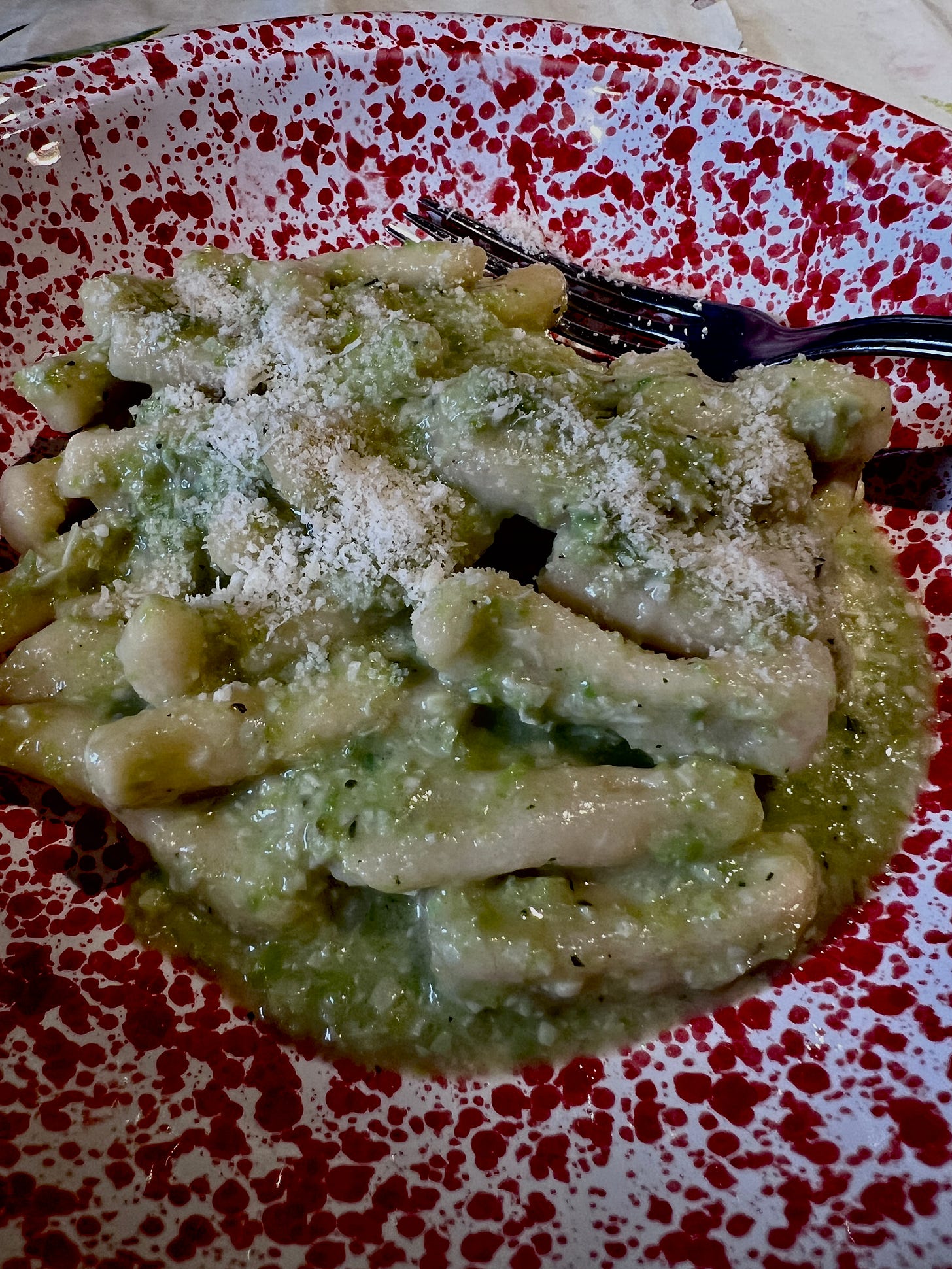


Share this post